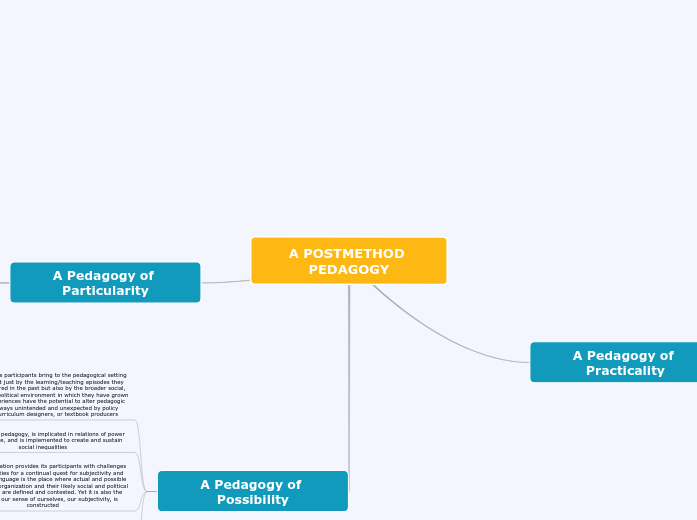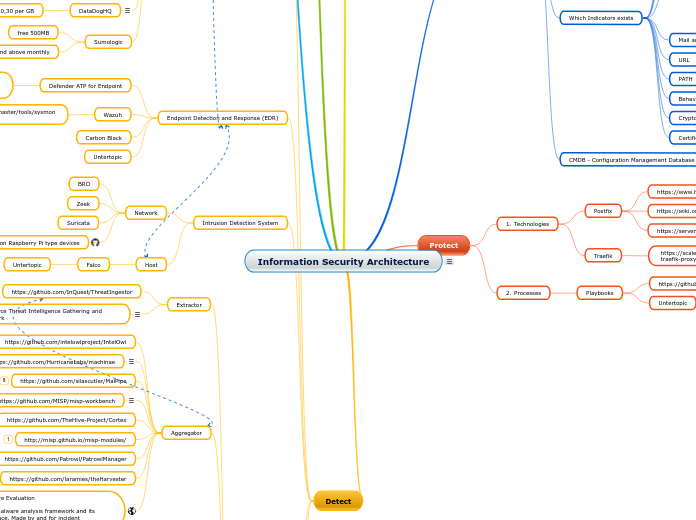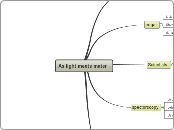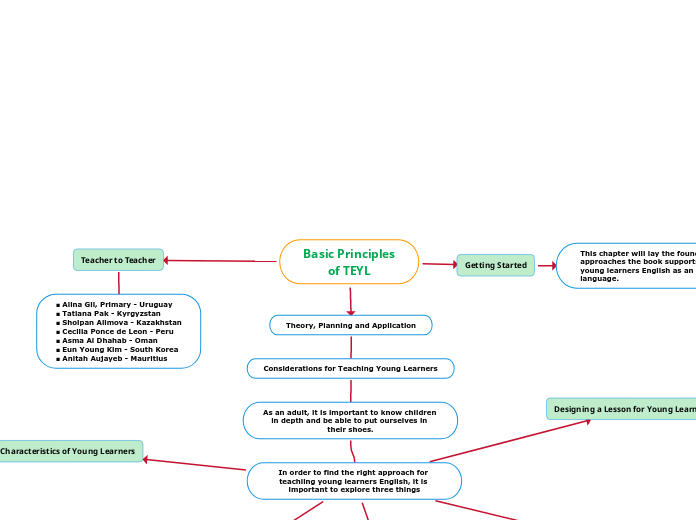The Thesis
References
Appendices
9. Conclusions And Future Work
Draw the conclusions from my work. What have I shown? What can I say about using the uDS as the basis for radar ATR? What are the differneces between mono and multiperspective classification? What is the best way to select training data for the classifier?
Start to look at where the work can progress from here. What are the next steps that must be taken? How would it be best to take them?
8. Analysis Of Results
Critical asessment of work
Review my work in a critical manner. What are its strengths and what are its limitations? It is important here to keep the strengths up, it will be easy to tear my work apart because I am so close to it.
Comparison between monperspective & multiperspective
A comparison of the difference between monoperspective and multiperspective classification systems.
I expect the multiperspective classification to come out as the best. However this will need to be fully justified here.
Multiperspective results
Review the multiperspective classification work. What has it shown?
How does it contrast with the exisiting body of monoperspective uDS classification, my own monoperspective work and other methods?
Results will be merged into this section so that it is not necessary to flick backward and forward between the method and results sections.
Monoperspective results
Review the monoperspective work.
How has it compared with the existing work in the same field?
What's been good about it and what's been not so good?
How do the theory/simulated results match with the actual data?
7. Multi Perspective Micro-Doppler Classification
Review the ideas of moving to a multiperspective classification system. What are the percieved gains? How do the techniques employed need to be modified?
Results will be merged into this section so that it is not necessary to flick backward and forward between the method and results sections.
Non template based classification
Template based classification
How the work from the monoperspective case was modified to work with multiple perspectives.
Feature extraction
How does feature extraction need to be modified in the multiperspective domain?
NetRAD Data
Data analysis
Comparable data analysis to the monoperspective case. Looking at how things are different in the multiperspective domain. This will no doubt include elements of data fusion.
There will need to be some stuff in here about how to create some form of mulitperspective data from the Thales data i.e. temporally separated data.
Field trials
What was considered ahead of doing the trials? How did the theory compare with the experimental results?
Keep this focused on issues of multistatic uDS and ATR. Don't spend ages talking about reflectivity coefficients and soil moisture.
Modelling of the μDS
Describe how the models of the uDS were expanded into the multistatic domain.
Multiperspective walking person
The multi perspective μDS
Develop the idea of the multistatic μDS. The size of this section could depend on what happens in the μDS section of the Background chapter.
The basic idea is to consider what is actually meant by multistatic micro-Doppler. The focus will be on how to fuse the differnent bistatic channels together.
Differnet forms
Review the different forms that the μDS can take. Effectively this is sensor fusion between the different bistatic paths that are available.
This should be tied quite closely to the NetRAD output. I'm not doing a multistatic radar thesis so I only want to focus on what I'm using and not trying to develop some all encompasing theory.
Multidimensional
Concatenate
Difference from mono
6. Monoperspective Frequency Domain Classification
Testing Strategy
Libraries and test datasets
Modification of DTW & k-NN
Bayesian classification
Data preparation/feature extractions
Introduce the ways that features have been extracted from the data.
In the time domain this is simply feeding the data in, but in the frequency domain it is more complex.
I still need to do work here to get better feature extraction going. This is particularly important for some of the parametric/learning classifiers.
PCA
Frequency domain
Time domain
Removing clutter
Zero Doppler clutterremoval
CLEAN algorithm
5. Monoperspective Time Domain Classification
Describe the template matching techniques that I have employed: DTW and k-NN. This introduction will cover the tequniques themselves and how I have employed them in classifying radar data.
Need to give some prominance to the use of DTW since this is the first time it's been used in radar.
Will also cover the creation of the libraries and test dataset here. This work may need to be moved to a position of more significance in the section.
Results and discussion
Testing strategy
Generating libaries and test datasets
Run through the idea of using correlation distance to select the entries for the libraries. This will need to be contrasted with the use of random selection. Why is correlation distance a better idea? How does it compare in performance terms?
k-Nearest Neighbours
Dynamic Time Warping
4. Micro-Doppler Data
Creating Unknown Data
Describe how to create synthetic unknown data. Introduce the propeller model and discuss it's outputs.
Propeller
Analysis Of Thales Data
Give an analysis of the data. What information can be found within it? What are the limits to this data?
Discuss things such as how the the uDS will vary. For example some graphs showing how the main Doppler shift and signature bandwidth will vary with target velocity.
Signal correlation
Framing data
The micro-Doppler signature
Not sure if this should be here or before Radar Target Classification section.
How to observe
Disucess the techniques used to observe the uDS. Look at what's good and what's bad about each one. Where would you want to use it? What assumptions are being made when it is used.
The focus will be on FFT and STFT/Spectrogram should probably find at least one other to use also.
It might be worth making the new approach cepstral processing as this is common in some other research on uDS and speech processing.
Wigner-Ville Distribution
Consider cepstral processing for this and some of the more advanced techniques such as Wigner-Ville distribution. Why haven’t I used them?
STFT
FFT
Vibrating Scatters
Theory
Discuss the uDS theory. Run through the ideas of Chen and Schnieder on how the uDS may be described theoretically.
Attempt to do this conceptually using ideas such as the superposition of the returns from the sub components of the targets. This will help with the ideas of how to model a walking person that come later.
Initially I discuss the theory from a monostatic perspective. The multistatic situations will be included in it's own section. I must remember to leave signposts for the multistatic situation as I work through the monostatic theory.
3. Foundation Theory
Evaluation of classification systems
How to evaluate the classifiers in the rest of the study.
This work is basically completed already, but there is the tricky issue of the Can't Declare thresholding. This is important, but I haven't implemented it in any work yet. Doing this is important as it will distinguish my analysis from Michele Vespe's.
Eval params
Introduce the parameters used for evaluating a classifier.
Explain how they are related and how they are effected by the two thresholds (unknown and can't declare).
R
Pgen
Pfa
Pd
Pcc
ROC Curves
Describe the use of ROC curves to set the thresholds for unknown intput detection and can't declare.
Can't declare
Introduce the idea of can't declare and explain how it is different to unknown.
Unknown inputs
Review the importance of being able to dected unknown inputs.
Black box classifier
Present the idea of the black box classifier. It is a high level abstraction that can be used to develop concepts without worrying about the precise implementation.
Radar basics
A quick review of the basics of radar: the usual stuff that gets covered in all radar text.
Focus should be given to the concepts that will be used in the rest of the the thesis e.g. introduce things like SAR/ISAR that provide alternatives to uDS classification. Keep these discussions very brief.
Introduce the idea of the Doppler shift. Run into a little more detail than one would normally do on this. Doppler shift is essential to the work in hand so best explain it well. Get in ideas such as how it can be considered a changing phase etc.
In this section consider both the mono and multiperspecitve situation. Ideas is going to be that the multiperspective stuff is brought in a little later, but I need to set it up here and put in the signposts
Monstatic, Bistatic and Mutlistatic Radars
The differences between monostatic, bistatic and multistatic radar. The most famous version of all the equations are monostatic. How do they vary in the bi/multistatic case?
Radar Waveforms
Introduce the idea of pulse compression here. Discuss the way correlation can be used to generate a compressed pulse and lead into the ambiguity diagram. Place emphasis on the parts of the ambiguity function that relate to Doppler.
Doppler Processing
What is the Doppler shift?
How was it orginally detected? This is MTI.
How can it be detected now we have pulse Doppler radars?
Coherency
What does it mean to have a coherent radar? How are the achieved?
Early systems (crazy magnetrons)Cutting pulses from a CW transmission.Hilbert transforms.Discuss what it is that make having a coherent radar important: integration and pulse Doppler.
Limits Of Detection Range
Discuss the concepts of radar range equation, SNR, pulse ambiguity, and pattern propagation factor.
Block Diagram Of Radar
Introduce the basic compoents of a radar system. Use a block diagram and make sure that it is clear which part is the receive chain and which is the transmission ready for split into bi and multistatic.
Include a target in the diagram so that all aspects of the discussion can be related back to the diagram.
2. Literature Survey
The literature survey. Perform a critical review of the current state of ATR and uDS classification.
Multiperspective classification
What has been done on multiperspective classification?
Limits of alternatives/current μDS
The case for why my research is needed. What is it about the other methods, both the alternatives to the μDS and the existing μDS techniques, that are limitted?
Things to consider here are: the platform depent nature to the Thales system; mistakes made by tired human operators; the need for specialist radar for SAR/ISAR/HRR.
Micro-Doppler signature classification
Review the current methods for using μDS to classify targets. Look at systems such as the Thales MSTAR and trained operator approaches.
Review of ATR methods
Review the alternative methods to μDS target recognition.
Consider things such as SAR/ISAR imaging, HRR classification and JEM modulation techniques. What is the deal with RCS based classification?
Need to run through, at a high level, their underlying workings and what sort of successes they have.
1. Introduction
Introduce the subject of the PhD.
Acts a little like and extended abstract/executive summary.
Covers similar material to the background but at a much higher level.
I want to use this section to orientate the reader, start bringing in the terminology of the subject and the basic ideas.
It will be high-level and should be a complete description of the work. A busy person should be able to read the introduction and the conclusion as a stand alone document.
Thesis outline
Describe the structure of the thesis to the reader.
Contributions of this study
Mutliperspective classification
A note on the emerging field. Probably should have some kind of reference to Michele's work and perhaps to the bat paper that covers the temporally separate multiperspective approach.
Moving μDS into the multistatic domain
Completely novel. The nearest thing to using multistatic radar and uDS is the paper on bistatic helicopter signature. But bistatic and multistatic are very different things.
Correlation method for library selection
Depends on an outstanding activity to compare the correlation libraries with randomly selected ones.
The contrasting will be helped when I get away from k-NN that needs all the extra entries in it's library.
However, whatever the output I should be able to say something in either why random selection or controlled selection is best. This hasn't really been done before.
Application of DTW to radar
A note on applying dynamic time warping to radar data. The other techniques I shall apply have all been used in the radar context before. However, to the best of my knowledge DTW hasn't been used with radar data previously.
Advance on using μDS for ATR
How has my worked moved the field of uDS recognition for radar ATR forward? How is why I have done different from the work of Stove, Bilik & Janhangir?
Overview
Give a brief introduction to the ideas of radar. Rapidly move onto the idea that with recent advances in computing technolgoy it has become practical to add target reconition to radar's traditional roles of detection and ranging.
The μDS
A brief history of the μDS. How it has emerged from JEM and how it is used on battlefield radar.It would be nice to get a tie in to sonar hear since they use people listening to accoustic signature for classification.Applications for ATR
Where will ATR be used?By the military for sureAir trafic controlCivilian security situationsOther civilian applicationg e.g. automotive radarAddition of ATR
Now that there are high speed computers backing up radar it becomes practical to perforom classification of the received signal.This classification will allow target recognition to be added to radar's conventional capabilities of detection and ranging.Conventional radar
Review the conventional role of radar i.e. radio detection and ranging.Include a few choice bits of information: when it was first developed, when it came to prominance etc.Keep the section brief and to the point.Abstract









